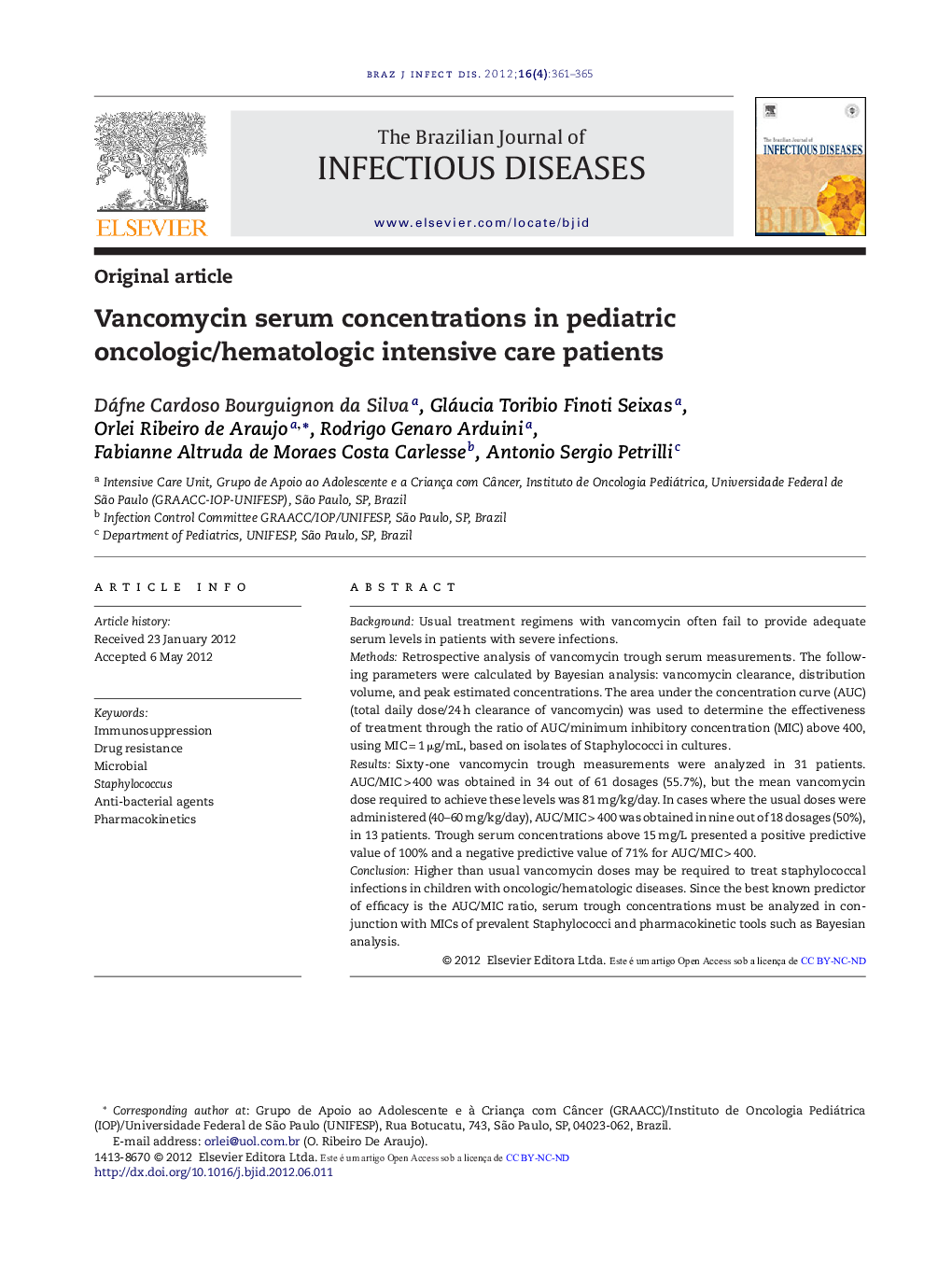| Article ID | Journal | Published Year | Pages | File Type |
|---|---|---|---|---|
| 3344283 | The Brazilian Journal of Infectious Diseases | 2012 | 5 Pages |
BackgroundUsual treatment regimens with vancomycin often fail to provide adequate serum levels in patients with severe infections.MethodsRetrospective analysis of vancomycin trough serum measurements. The following parameters were calculated by Bayesian analysis: vancomycin clearance, distribution volume, and peak estimated concentrations. The area under the concentration curve (AUC) (total daily dose/24 h clearance of vancomycin) was used to determine the effectiveness of treatment through the ratio of AUC/minimum inhibitory concentration (MIC) above 400, using MIC = 1 μg/mL, based on isolates of Staphylococci in cultures.ResultsSixty-one vancomycin trough measurements were analyzed in 31 patients. AUC/MIC > 400 was obtained in 34 out of 61 dosages (55.7%), but the mean vancomycin dose required to achieve these levels was 81 mg/kg/day. In cases where the usual doses were administered (40–60 mg/kg/day), AUC/MIC > 400 was obtained in nine out of 18 dosages (50%), in 13 patients. Trough serum concentrations above 15 mg/L presented a positive predictive value of 100% and a negative predictive value of 71% for AUC/MIC > 400.ConclusionHigher than usual vancomycin doses may be required to treat staphylococcal infections in children with oncologic/hematologic diseases. Since the best known predictor of efficacy is the AUC/MIC ratio, serum trough concentrations must be analyzed in conjunction with MICs of prevalent Staphylococci and pharmacokinetic tools such as Bayesian analysis.
